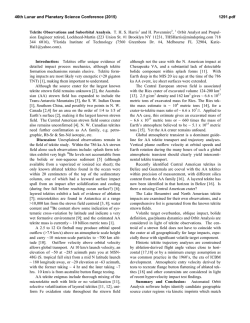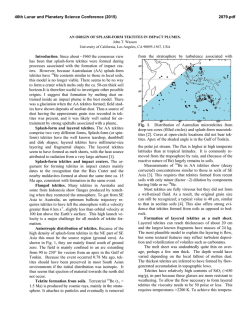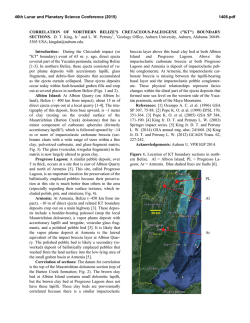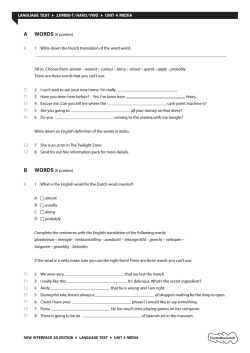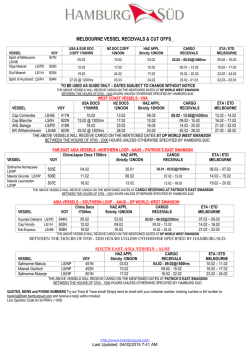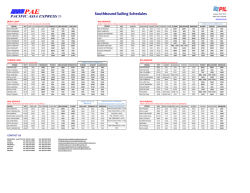
THE 2014 REPORT ON THE BELIZE TEKTITE STREWN FIELD. H
46th Lunar and Planetary Science Conference (2015) 1132.pdf THE 2014 REPORT ON THE BELIZE TEKTITE STREWN FIELD. H. Povenmire1 and J.H. Cornec2, 1 Florida Institute of Technology, 7560 Greenboro Drive #4, Melbourne, FL 32904 [email protected] 2 Geologist, Denver [email protected] Introduction: A series of expeditions have been made in 2014 to refine the dimensions of the strewn field and document new specimens. Samples are being distributed to scientific and educational institutions in Belize, USA and Europe. The confirmed locations comprise more than 500 square km in the Cayo district of Belize [1],[2], [3],[4].Splash-form tektites are found erratically distributed within Quaternary gravel beds outcropping north of the Belize River, at the very top of Miocene-age bentonitic clays and in recent lag gravels found overlaying the same unit. It is speculated that this strewn field may cover much of the Yucatan peninsula. Several tektites from archaeological context have been recovered within rubble fill at Mayan sites during archaeological diggings at Tikal and at Topoxté in Guatemala’s northeastern Peten region, at El Pilar on the Belize-Guatemala border and at Dzibilchaltún near Merida in Mexico. Tektites at these sites could have been brought in from elsewhere and a field prospecting trip to NE Guatemala is scheduled for 2015 to attempt to locate in-situ specimens. A combined 38 tektites totaling 153 grams were submitted to ALS Global Laboratory [5] for determination of 62 major, minor, and trace elements using various modes of whole-rock and geochemical analysis by ICPMS, ICP-AES and XRF. The composition of Belize tektites is characterized by low silica and high iron, calcium and sodium contents compare with tektites from other strewn fields. Results for the major element contents in wt% are as follows: SiO2:61.75, Al2O3: 16.95, TiO2: 0.92, FeO: 6.99, MnO: 0.17, MgO: 1.85, CaO: 4.8, Na2O: 3.75, K2O: 1.92 (total: 99.1%) The largest documented Belize tektite to date is a 64 gram bar shaped specimen. Numerous angular specimens weighing as little as a fraction of a gram are found within the same area, suggesting proximity to an impact site. This is confirmed by their petrography [6], [7]. Belize tektites are 786,000 years old, eerily the same age as the ones found in Australia, Southeast Asia and Indochina, but chemically distinctive. Intriguingly enough, Belize is located at an antipodal point from the theoretical center of the Australasian strewn field. The parent crater has not been identified, but the best candidate is Pantasma [8], a 13 km diameter feature located in northern Nicaragua, and 500 km south of the known Belize tektite strewn field. An expedition is planned in early 2015 to search for shatter cones, breccia, upturned strata and possible meteorites or lay- ered tektites. Two possible impact features have also just been identified in northern Belize, which warrant further investigation. References: [1] Cornec, J.(2010) A New Tektite Strewn Field Discovered in Western Belize, http://belize-travel-blog.chaacreek.com. [2]Cornec J., Cornec L., 2010. The Sequel. [3] Povenmire, H. (2013) Tektites: A Cosmic Mystery Blue Note Publishing, Melbourne, FL. [4] Povenmire, H. (2014) Tektites: A Cosmic Puzzle Blue Note Publishing Melbourne FL. [5] Analysis done by ALS Minerals for Cornec J. (2014), unpublished. [6] Possible tektites from Belize, Central America: Petrography and Geochemistry, C. Koeberl, B. P. Glass, 77th Annual Meteoritical Society Meeting (2014) Abstract #5034. [7] Magnetic Properties and Micro Raman Spectroscopy of a Central American Tektite from Belize, V.H. Hoffmann, M. Funaki, J. H. Cornec, M. Kaliwoda, R. Hochleitner, 44th Lunar and Planetary Science Conference (2013), Abstract #2528. [8] L. Kowald, 2006, www.pantasma.com
© Copyright 2024
